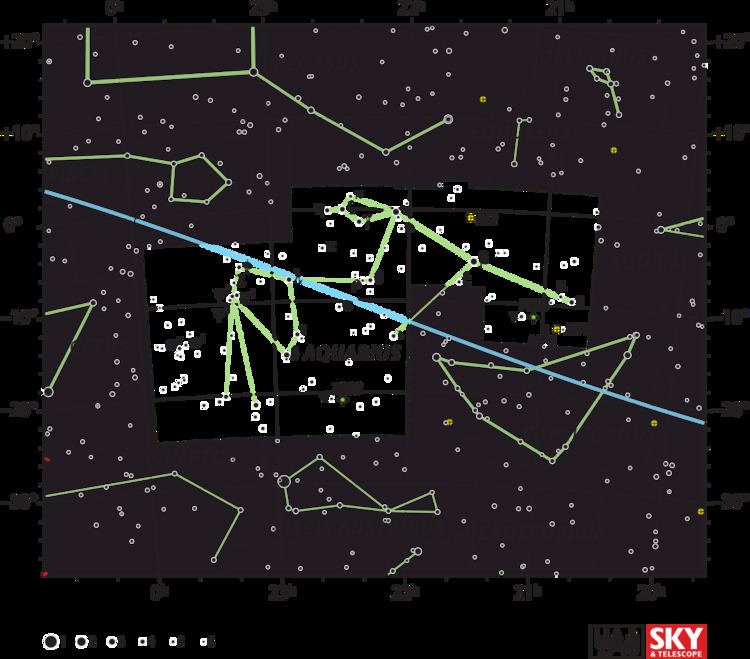Magnitude 5.03 Apparent magnitude (V) 5.03 | ||
 | ||
People also search for Theta Aquarii, Nu Aquarii, Pi Aquarii | ||
Kappa Aquarii (κ Aquarii, abbreviated Kappa Aqr, κ Aqr), also named Situla, is a double star in the equatorial constellation of Aquarius. This system is visible to the naked eye, but it is faint at an apparent magnitude of 5.03. Based upon parallax measurements made during the Hipparcos mission, it is around 214 light-years (66 parsecs) from the Sun.
Contents
Nomenclature
κ Aquarii (Latinised to Kappa Aquarii) is the system's Bayer designation.
It bore the traditional name Situla, a Latin word meaning "bucket" or "water jar". In 2016, the International Astronomical Union organized a Working Group on Star Names (WGSN) to catalogue and standardize proper names for stars. The WGSN approved the name Situla for this star on 12 September 2016 and it is now so entered in the IAU Catalog of Star Names.
In Chinese, 虛梁 (Xū Liáng), meaning Temple, refers to an asterism consisting of Kappa Aquarii, 44 Aquarii, 51 Aquarii and HD 216718. Consequently, Kappa Aquarii itself is known as 虛梁三 (Xū Liáng sān, English: the Third Star of Temple.). From this Chinese name, the name Heu Leang has appeared, meaning "the empty bridge".
Namesake
USS Situla (AK-140) was a United States Navy Crater class cargo ship named after the star.
Properties
Kappa Aquarii is most probably a wide binary star system. The brighter component is a giant star with a stellar classification of K2 III. It has exhausted the supply of hydrogen at its core and has expanded to 13 times the radius of the Sun. It is radiating 60 times the Sun's luminosity from its outer envelope at an effective temperature of 4,581 K, giving it the orange-hued glow of a K-type star.
The fainter companion star is located at an angular separation of 98.3 arcseconds and has an apparent magnitude of 8.8.
In culture
Endymion, an 1818 poem by John Keats, describes the star in its form as a water urn thus:
